A set of exercises with the "vacuum" technique for the abdomen among athletes is considered to be the most effective way to restore or acquire the tone of the muscles of the press. How to perform it correctly and what mistakes in using exercises in regular classes should be avoided - later in the article.
What is abdominal vacuum
The abdominal vacuum was originally used as a breathing technique in yoga, based on the competent organization of the slow filling and emptying of the lungs. An adequate understanding of how to do it correctly, as well as what sensations are signals to suspend the use of such breathing exercises, is the key to success in the formation of a tight abdomen.
Observing competent technique, as a result of the exercises, you can achieve a significant strengthening of the internal muscles of the abdominal region and the "musculature" of the diaphragm.
Regular vacuum performance is recommended for those with loose skin on the abdominal area or those with a rounded, bulging belly, namely its lower part. Currently, athletes and people who want to stay in shape use a variety of variations of the vacuum.
The main essence of all such exercises is considered to be the maximum expulsion of the recruited air from the lungs, followed by pulling the anterior wall of the abdominal region inward by means of muscle tension in the abdominal area and fixing the position obtained for 10 or 15 seconds, based on the general preparedness of the person performing this breathing exercise.
Exercise efficiency and muscles involved
The vacuum of the abdomen (how to do it right - it is important for the athlete to understand before starting classes) brings a high-quality result, visible to the naked eye. The effectiveness of the technique consists in a competent distribution of the load on the abdominal muscle corset, taking into account the anatomical features of the structure of the human body, namely, the maximum impact on the transverse muscle of the press.
The usual "pumping" of the muscles of the abdominal region stimulates to work exclusively oblique and rectus muscles, which are responsible for the relief. However, it is the transverse musculature, which is mostly loaded during the implementation of a vacuum, that prevents the displacement of internal organs from their physiological places and contributes to the formation of a taut silhouette with a thin waist.
Consequently, by including the considered breathing practice in the list of "everyday things", the athlete will be able to achieve positive changes not only in his appearance, but also in his state of health and health in the shortest possible time.
Exercise options
The basic algorithm that underlies all breathing technique variations involves the following steps:
- Place the body in the starting position (IP): stand up straight, make sure that the distance between the feet corresponds to the distance from one shoulder to the other. Hands are relaxed or placed on the hips.
- Inhale as slowly as possible, filling the lungs as much as possible. Then exhale the collected air in a powerful stream. In this case, it is important, in parallel with the emptying of the lungs, to draw the front wall of the abdomen inward, figuratively, as if connecting the navel with the inner surface of the back.
- Fix the position, if possible, for 7 seconds. (for beginners) or 20 seconds (for experienced, physically trained athletes).
- At the end of the respiratory complex, inhale gently and return to the PI.
- Repeat the vacuum the required number of times, provided by the training program.
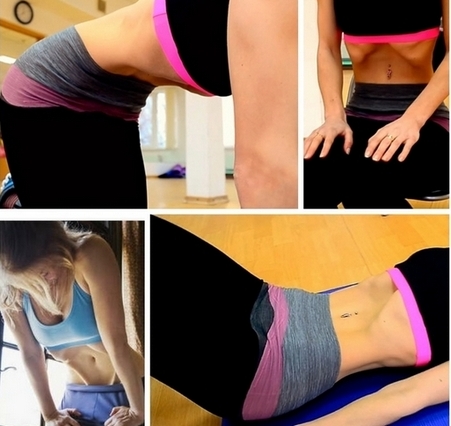
It should be noted that in addition to the traditional scheme for performing a breathing exercise from a standing position, there are other variations of the PI:
- sitting on a hard surface;
- half-sitting on a chair;
- in a position, kneeling or, so-called, "all fours";
- lying on your back on the floor or firm bed.

 Don't miss the most popular column article: Morning exercises for those over 40, 50. Gymnastics exercises for weight loss, video tutorials.
Don't miss the most popular column article: Morning exercises for those over 40, 50. Gymnastics exercises for weight loss, video tutorials.How many times to do a stomach vacuum
The vacuum of the abdomen (how to do it correctly, in particular, how many times, taking into account the previous physical activity of the athlete) must be performed after consultation with a competent specialist, for example, a sports doctor or professional bodybuilder.
In the absence of contraindications or some restrictions, the appropriate number of repetitions of the vacuum is considered to be from 3 to 7 approaches per 1 cycle. If it is necessary to achieve the maximum effect of the technique under consideration, it is recommended to repeat the cycle 5 - 7 times a day for 6 days a week.
With regular exercises, despite possible painful sensations at the initial stage of the vacuum, after 2 - 3 weeks, the indicated repetitions should be increased up to 10 times per cycle, repeated 8 - 10 times a day, 6 days a week.
The benefits of exercise
It is important to understand that solely as a result of regular work on your body with the help of the breathing technique in question, as well as a well-chosen load, you can achieve a visible effect and receive invaluable benefits not only for your appearance, but also for your general well-being.
Most athletes who have included such breathing exercises in their training program note among the main beneficial effects:
- toning the transverse abdominal muscles, which as a result makes it flat;
- preventing the displacement of the internal organs of the abdominal region, in particular, the small pelvis;
- a significant reduction in the visceral type of fatty layer;
normalization of the digestive tract;
- the formation of a beautiful silhouette that emphasizes the thin waist;
- improvement of posture, as a result of strengthening the muscular corset of the trunk;
- supplying the brain with a sufficient amount of oxygen necessary for normal blood circulation and the functioning of internal organs;
- prevention of deviations in general well-being, which are the result of stagnant processes in the pelvic area;
- providing a calming effect on the athlete's nervous system.
Contraindications
While vacuum isn't considered a strength exercise, it's not safe for everyone to do it. In the presence of some deviations in the physical state of the person performing these physical elements, the vacuum for the abdomen will not only be ineffective, but can also cause significant harm to the weakened body, aggravating the condition with a progressive disease.
A vacuum for the abdomen (how to do the exercise correctly so as not to harm health, it is important to understand before starting to perform it) is not recommended in the presence of certain pathologies.
These include:
- any chronic diseases of the abdominal or pelvic region;
- gastritis;
- ulcer;
- dysbiosis;
- kidney disease;
- deviations in the functioning of the biliary system;
- spine diseases;
- insufficiency of the cardiovascular system, including heart defects of any degree;
- ischemia;
- abnormalities in the venous system that interfere with normal blood circulation in the body;
- period of the menstrual cycle;
- pregnancy;
- full stomach;
- operations in the abdominal and pelvic region, less than 6 months old;
- endocrine system diseases;
- frequent dizziness, fainting or lightheadedness.
Vacuum in prone position for beginners
Having made the decision to perform a daily vacuum, it is advisable for a beginner athlete to start with its simplest variation - from a lying position.
Competent technique for beginners implies strict adherence to each step of the algorithm below:
- Take the starting position (IP): sit on your back, while being preferably on the floor. The back and shoulders must be fully extended and pressed as much as possible to the surface. Relax your arms and put them along your torso. There should be a free position in the legs.
- Make a deep entrapment of air through the nasal passage and, without holding your breath, exhale, emptying your lungs as much as possible.
- When exhaling air, it is necessary to press the stomach as tightly as possible to the spine, as if wrapping it under the ribs. In case of insufficient muscle strength for the required "gluing", it is allowed to slightly press the abdominal region with a third-party object towards the spine, but only in the navel.
- Hold your breath, keeping the obtained position for 10 - 15 seconds. (or any other time determined based on the health condition and the presence of contraindications for the athlete).
- Slowly inhale the air upon completion of the exercise. It is important not to take sudden breaths, due to the possible occurrence of dizziness due to the simultaneous supply of oxygen to the body in large quantities.
- Having restored breathing, the vacuum should be repeated the required number of times indicated in the athlete's personal training program.
In a pose on all fours
One of the more complicated variations of the traditional vacuum is its execution in the so-called position on all fours.
Choosing this option, you should also adhere to the generally accepted technique:
- Place the body in the starting position (IP): knees and palms are on a solid surface, the back is straight, the shoulders are straightened, the face is down, the neck is parallel to the floor, that is, the head is a kind of continuation of the back. Make sure that the shoulders are directly above the hands and the knees are under the buttocks.
- Draw in as much air as possible through the nasal passage, filling the lungs as much as possible, and then exhale through the oral cavity, with a strong stream, emptying them.
- At the moment of air release, the "front" part of the abdominal region figuratively should come into contact with the spine due to the strong tension, due to the tightening of the abdominal muscles.
- Linger in a similar position for 9 - 17 seconds, making sure that the abdominal region is immobilized. Otherwise, the vacuum will lose its effectiveness and turn into an “ordinary” strengthening of the lungs.
- After the required time, relax the tense muscles and, having normalized the respiratory process, repeat the above cycle for a specified number of times.
Sitting position
The vacuum of the abdomen (how to do it correctly from a sitting position is discussed in detail below) can be performed in several positions. Athletes who practice the breathing technique in question for a long time change their body positions for greater effect.
The algorithm for performing the described breathing technique in this position requires the following:
- Taking a stable stool or sitting on any other solid surface, it is necessary to place the body in the starting position (IP): sit down, while controlling the position of the back, which should be extremely straight, taking into account the need to straighten the shoulders.Make sure the knees form an even 90 degree angle. Relax your hands and put them on your knees.
- Draw in air through the nasal passage, filling the lungs with as much of it as possible and, without fixing the position, exhale the air they fill.
- In parallel with the emptying of the lungs, it is necessary to press the outer wall of the abdominal region as much as the muscles of the press allow. With ideal performance of the exercise, the abdomen should be figuratively wrapped under the ribs, through the contact of the navel with the spine.
- Fix the position, excluding any relaxation of the muscles of the press, for 10 - 15 seconds.
- Slowly and gradually refill the lungs with air.
- After making sure that even breathing is restored, repeat the above sequence the required number of times, on average 5 - 7.
Standing
The abdominal vacuum performed while standing is considered an exercise for intermediate or higher level "home athletes". In this case, due to the increased complexity, it is more important than ever to strictly adhere to a specially developed technique for performing the respiratory complex.
The technique for performing the exercises is as follows:
- Place the body in the starting position (IP): place the feet strictly under the shoulders, fasten the hands in a relaxed state on the hips, the back is straight, the crown stretches towards the ceiling.
- Draw in as much air as possible through the nasal passage.
- Without fixing for a long time in the obtained position, exhale the recruited air, in parallel with this, drawing in the anterior abdominal wall, figuratively trying to connect it with the spine.
- Maintain this position for 15 - 20 seconds, making every effort not to breathe. If holding the breath seems difficult, it is allowed to take several small breaths without relaxing the stomach.
- Upon completion of the exercise, inhale lightly air, and slowly bring the body into the above PI.
How often to train
Workouts that include regular repetition of several vacuum cycles are recommended for at least 5 days a week. A break for 2 days off, especially at the initial stage of training, is necessary to restore the muscle corset, in order to avoid excessive pain.
After some time, having made sure of the body's normal reaction to the given loads, you can increase the number of approaches and the frequency of training itself. For trained athletes, the optimal number of days for a vacuum is 6 to 7 days a week.
What mistakes can be during the exercise
In order to avoid causing harm to your body, it is advisable to keep in mind the most common mistakes in performing a vacuum to obtain elasticity and tightening of the abdomen, made by people who monitor their appearance even outside specially equipped gyms.
The most common mistakes include:
- Rounding of the back in the thoracic spine. This error is fraught with incorrect installation of the anterior abdominal wall, which inevitably entails a significant decrease in the efficiency of the performed respiratory complex.
- Practice the exercise in question after a heavy meal or fluid intake... In the described case, the athlete will not only be able to disrupt normal digestion processes, but also significantly reduce the effectiveness of the vacuum, due to the physiological impossibility of maximizing the tension of the abdominal muscles with a full stomach and intestines.
- Sharp breathing. Uneven inhalation of air and its subsequent exhalation are unacceptable when performing a vacuum, due to the unpredictable reaction of the body to unexpected oxygen saturation in a large volume.
Training program
If the athlete does not have obvious contraindications to the implementation of a vacuum, it is advisable to take as a basis the training program below, which also includes the respiratory complex considered in the article.
Training procedure:
- Warm up.
- Horizontal bar, maintaining position for at least 2 minutes.
- Twisting lying on the press - 20 - 25 times.
- Vacuum in the position on all fours or sitting on a firm horizontal surface for 3 - 5 repetitions, the maximum for the duration of fixing the key position of the vacuum.
- Raising the legs lying on your back for pumping the lower part of the press - 15 - 20 times.
- Cardio exercises (for example, jogging on a treadmill) for 10 to 15 minutes.
- Cool down, breathing recovery, smooth muscle stretching.
results
Exceptionally regularity and a competent approach to the distribution of physical activity on the body can subsequently bring visible results. Publicly available statistics show that people who regularly perform vacuum to restore abdominal tightness noticeably decrease the volume of the lower abdomen, increase the elasticity of the skin in the abdominal region, and also reduce the waist.
In addition to external changes, athletes who practice the respiratory complex considered in this article also note an improvement in overall well-being and health, in particular, getting rid of headaches, migraines, and, in some cases, even normalizing blood pressure.
Competent adherence to the abdominal vacuum algorithm, as well as careful adherence to generally accepted rules governing the issues mentioned in the article, in particular, how to perform it correctly or what contraindications it has, can bring results visible to the athlete within the first 2 weeks of regular exercise.
Article design: Olga Pankevich
Video about abdominal vacuum and how to do it correctly
Abdominal vacuum options:

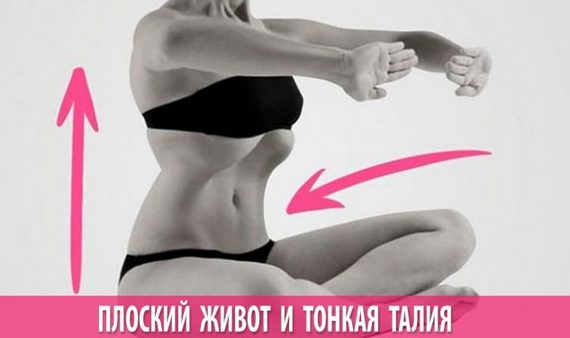
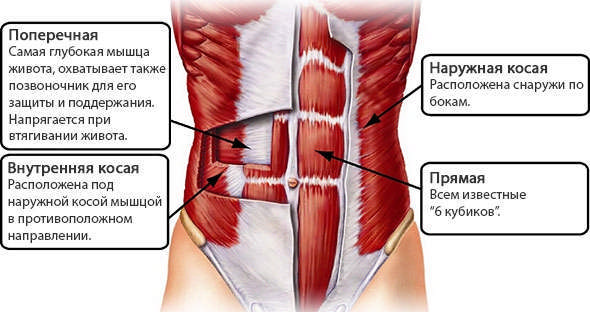
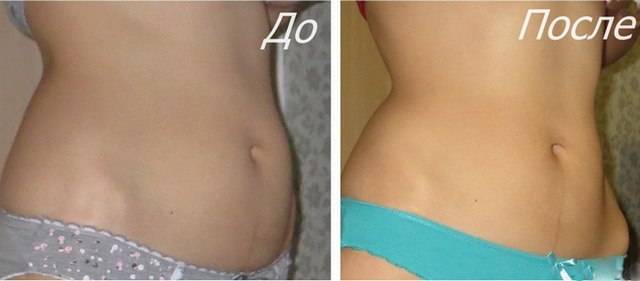
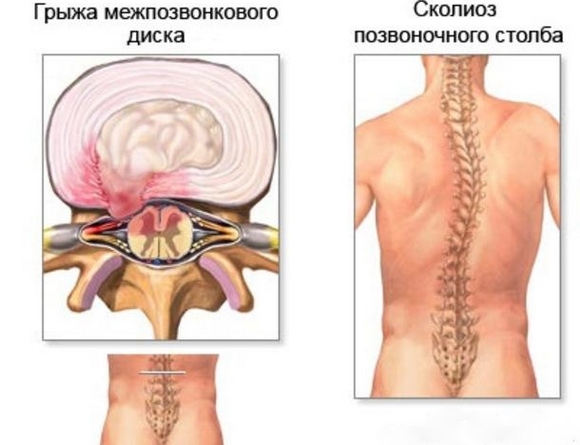
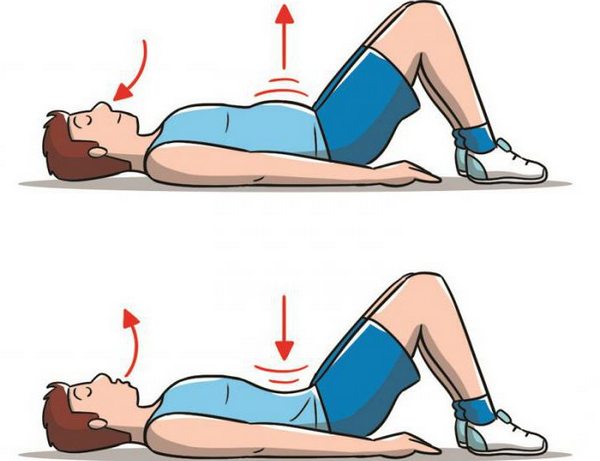
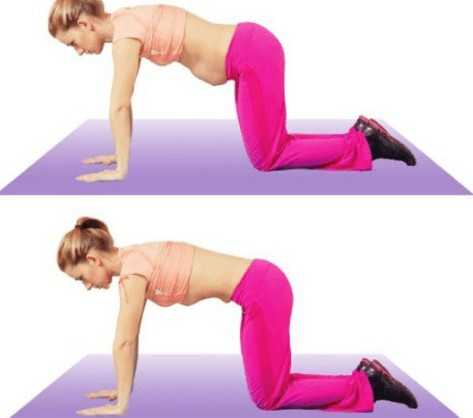
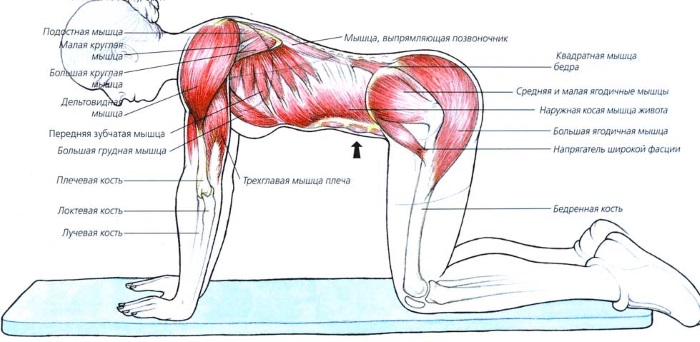
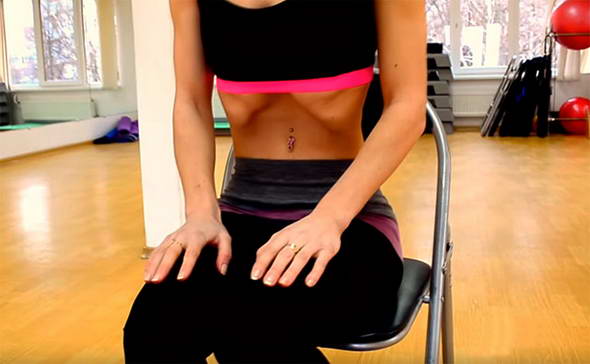
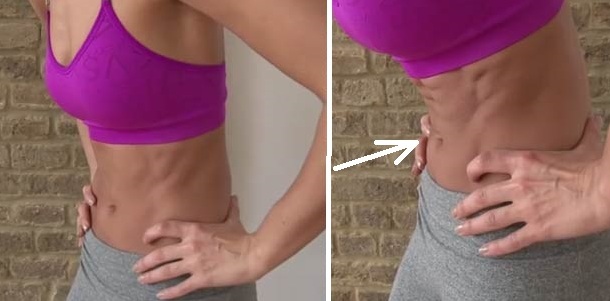
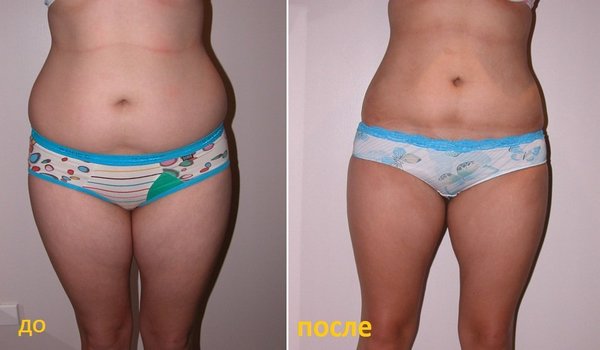
I did not believe that such simple exercises can get rid of an ugly belly. But after she saw what results my friend had achieved, she began to do the exercises daily. It is absolutely not difficult, and the effect is already becoming noticeable.